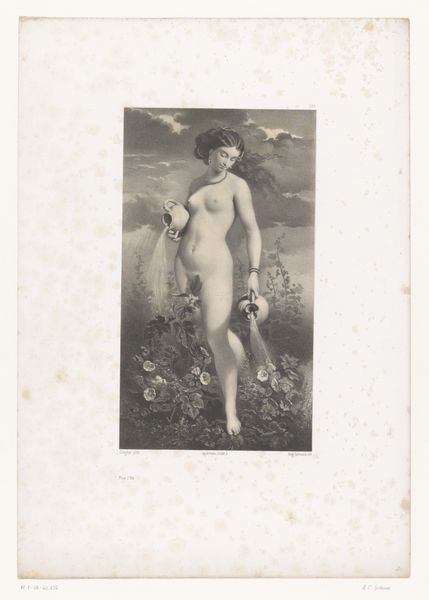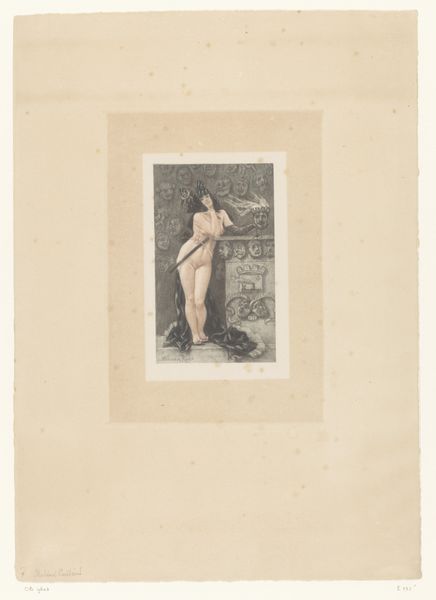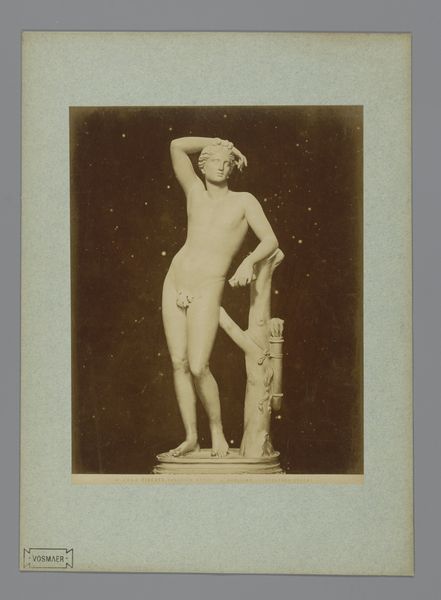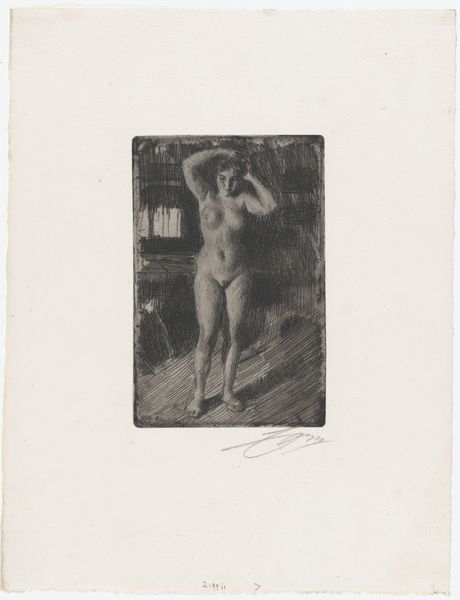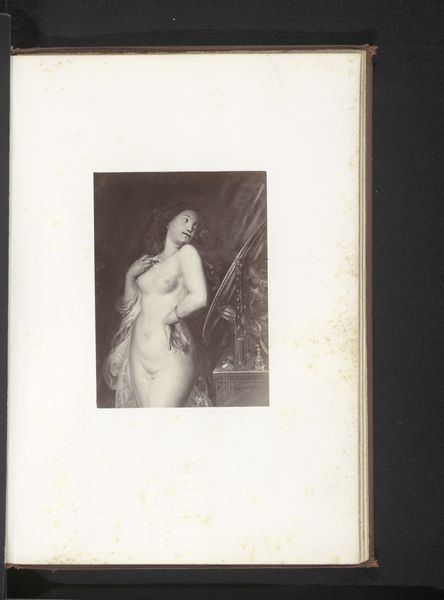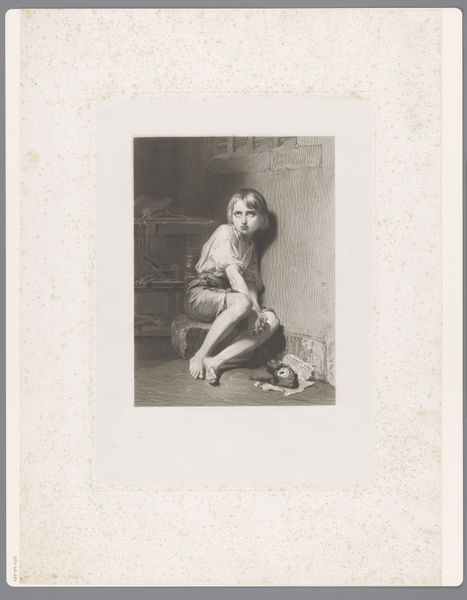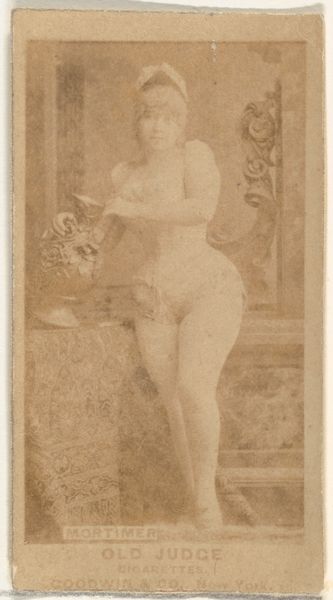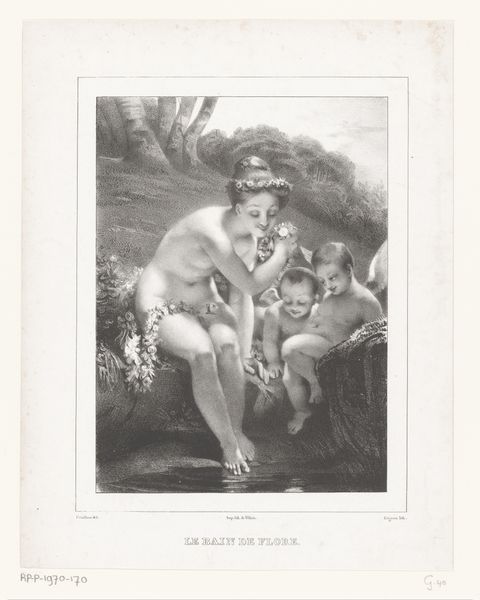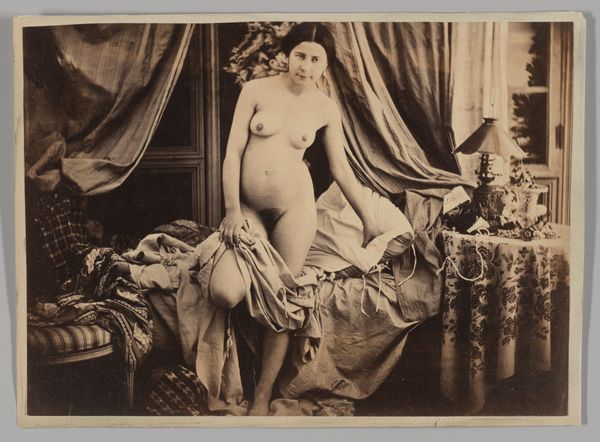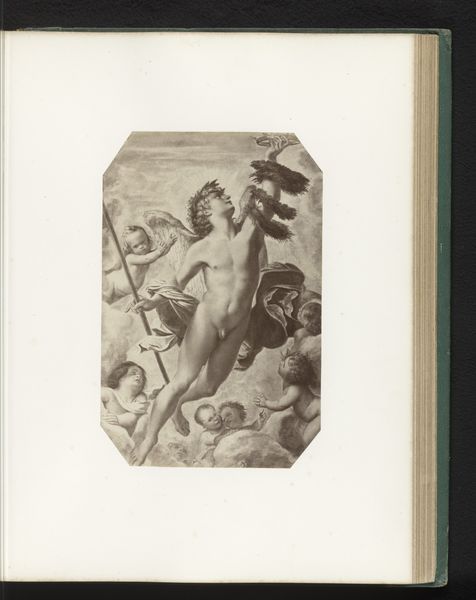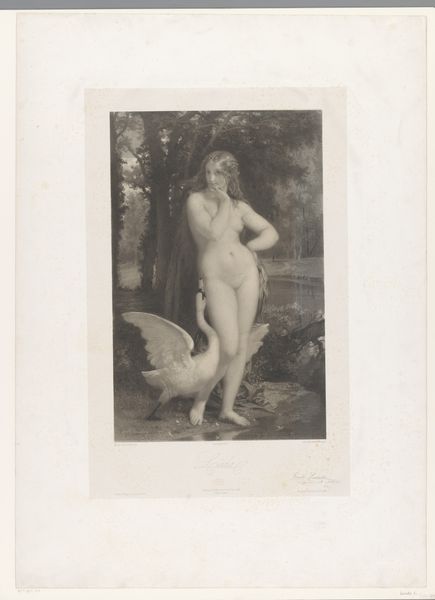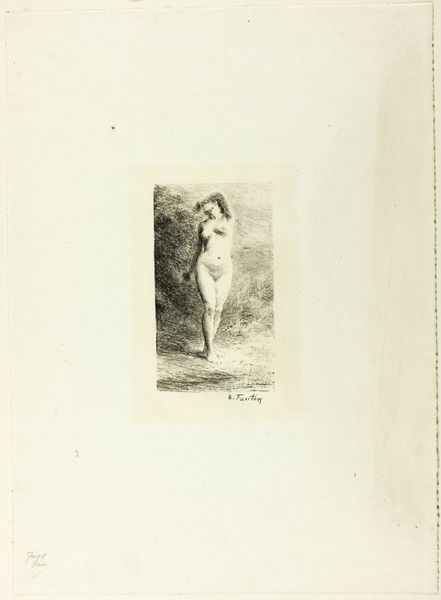
Dimensions: height 475 mm, width 324 mm
Copyright: Rijks Museum: Open Domain
Curator: This is "The Birth of Venus," also known as "Venus Anadyomene," an engraving made between 1863 and 1892, after Auguste Achille Morse. Editor: Wow, that Venus has the air of a debutante unsure if she left the oven on back home. And so many cupids, positively teeming! It almost feels like an over-sweetened confection, you know? Curator: The profusion is interesting, isn't it? Engravings like these were made for mass consumption, widening the availability of classical themes to broader audiences. Consider the labour: the fine lines, the repetition to produce a sense of volume...all mediated for the bourgeois home. Editor: Mass consumption, mediated…that kills the romance somewhat, doesn’t it? But I can't help but feel charmed, especially with how soft and inviting Venus’ expression is! But, it feels more like an image designed to reassure, almost lull people. Curator: Perhaps reassuring them of the continuation of tradition, or comforting those newly acquiring a disposable income with the knowledge that they now can hang fine art on their walls... Sort of a Baroque fantasy, neatly packaged and saleable. Editor: "Baroque Fantasy, Neatly Packaged" that has such an evocative cadence, actually. Although the details feel a bit sanitized in translation into the print. The Baroque aesthetic always holds a visceral kind of passion that has an interesting intersection here within themes of idealized female form. Curator: Note too the blank inscription plate. Mass production could also be personalized. I wonder what names or dedications would be inscribed on different copies as they were purchased and gifted across families. The consumption goes on. Editor: Oh! Perhaps we were seeing it backward. This blankness provides room for individual desire within mass production. To allow everyone to make her their Venus. And if everyone feels she is there just for them… isn't that a dangerous love, one that knows neither beginning nor end? Curator: A chilling reading! I had been primarily thinking of it only as a process in historical, socioeconomic terms...but perhaps you’ve revealed there's also the seeds for infinite social reproductions. Editor: The curse and the beauty, I reckon.
Comments
No comments
Be the first to comment and join the conversation on the ultimate creative platform.

